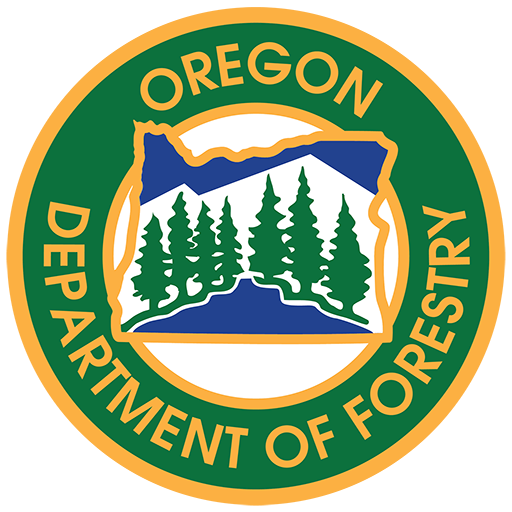It’s unusual for evergreen trees to turn color in August, or any time of year for that matter, but that’s what we are experiencing in parts of Wasco County.
 Over the past three years much of Oregon has experienced abnormal levels of water stress and higher than average temperatures. This has resulted in greater tree stress and weaker defensive mechanisms to resist bark beetles. While tree mortality from bark beetles is not uncommon, the number of trees dying is above average for this area. The Oregon Department of Forestry recently conducted an aerial survey over parts of Wasco County and identified many areas that have been hit particularly hard in terms of drought stress. Surveyed areas showing heightened levels of mortality range from Mosier to the White River, with the area between Eight Mile Creek and Fifteen Mile Creek being hit the hardest.
Over the past three years much of Oregon has experienced abnormal levels of water stress and higher than average temperatures. This has resulted in greater tree stress and weaker defensive mechanisms to resist bark beetles. While tree mortality from bark beetles is not uncommon, the number of trees dying is above average for this area. The Oregon Department of Forestry recently conducted an aerial survey over parts of Wasco County and identified many areas that have been hit particularly hard in terms of drought stress. Surveyed areas showing heightened levels of mortality range from Mosier to the White River, with the area between Eight Mile Creek and Fifteen Mile Creek being hit the hardest.
Some forest landowners have taken a proactive approach and are currently salvaging dead and dying trees. Often times, if salvaged soon after the needles turn color, trees will retain some market value at the mill which can help off-set the cost of removing the trees. As part of the salvage, many landowners plan to pile the logging slash and burn the piles this fall or winter before the beetle flight occurs in the spring. During the flight period (April through September), beetles are highly attracted to logging slash, especially newly created slash piles. Burning slash piles before April 1st removes the food source and greatly reduces the likelihood of beetles moving into your area.
 Actively managing the forest landscape has many benefits to the landowner; for example removing dead and dying trees reduces fuel loading, and reduces the likelihood of large stand-replacing wildfires from sweeping across the landscape. It removes stressed and weakened trees that bark beetles are largely attracted to, and significantly reduces the likelihood of a bark beetle outbreak. It can be a source of revenue which can help off-set the costs of equipment used to salvage trees, and can help finance other projects to enhance your forest land such as maintaining or improving road systems, replacing old culverts, or planting new seedlings after harvest. While salvaging the dead and dying material, forest land owners often take the opportunity (while the equipment is on site) to selectively thin-out competing trees and other vegetation in order to maintain a healthy growing environment for the remaining trees.
Actively managing the forest landscape has many benefits to the landowner; for example removing dead and dying trees reduces fuel loading, and reduces the likelihood of large stand-replacing wildfires from sweeping across the landscape. It removes stressed and weakened trees that bark beetles are largely attracted to, and significantly reduces the likelihood of a bark beetle outbreak. It can be a source of revenue which can help off-set the costs of equipment used to salvage trees, and can help finance other projects to enhance your forest land such as maintaining or improving road systems, replacing old culverts, or planting new seedlings after harvest. While salvaging the dead and dying material, forest land owners often take the opportunity (while the equipment is on site) to selectively thin-out competing trees and other vegetation in order to maintain a healthy growing environment for the remaining trees.
If drought conditions persist, it is likely the situation will worsen and more hillsides will turn from green to red. The Department of Forestry encourages landowners to be proactive in managing their forests and can provide technical forestry assistance to help in those efforts. As a reminder, the Department of Forestry must be notified at least 15 days before you plan on harvesting trees in order to review the area for resources that may require protection. Also, fire tools, a water trailer or water truck, and other fire equipment is required when working during fire season. For more information contact Chet Behling (Stewardship Forester) at the Oregon Department of Forestry (541) 296-4626.

